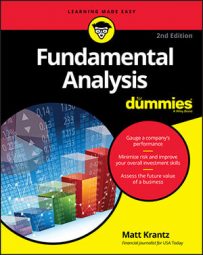Technical analysts are very interested in the direction of a stock's price. But most technical analysts also pay close attention to how much trading volume is occurring. Trading volume measures how much investors are buying or selling a stock. If buyers and sellers are furiously trading shares back and forth, then trading volume is considered to be high, or active.When trading volume is active, technical analysts figure they can trust the price movement to a greater degree. For instance, imagine a stock that soars to break into new high ground, but on low trading volume. A technical analyst would be skeptical of the move higher, because a relatively small group of investors powered it. Similarly, if trading volume is heavy, that tells the technical analyst there's a great deal of volume, or conviction, behind the trade.
This table summarizes the way a fundamental analyst might couple reading volume with price movements.
| If a stock . . . |
. . . and trading volume is . . . |
Technical analysts are . . . |
| Rises |
Higher |
Bullish |
| Rises |
Lower |
Cautiously bullish |
| Falls |
Higher |
Bearish |
| Falls |
Lower |
Cautiously bearish |
Your next question, though, might be how you can determine whether trading volume is higher or lower. The major stock market exchanges, including the Nasdaq and New York Stock Exchange, provide trading volume for the day and the average daily volume to most of the financial websites. Technical analysts compare a stock's trading volume for the day with its average daily volume to determine whether buying and selling is active or not.Using MSN Money's site, you can obtain a stock's daily and average daily volume following these steps:
- Log into MSN Money at money.msn.com.
- Enter the stock's symbol in the blank and click the name of the company when it appears.
- Read and interpret the volume.
Scroll down and you'll see a line titled Volume (Avg). Here you'll find the stock's volume that day listed first. Following the daily volume, in parenthesis, you will find its average daily volume over the past 13 weeks. When the day's volume is considerably higher than average, then you can use that insight to analyze the significance of the stock price's move.
